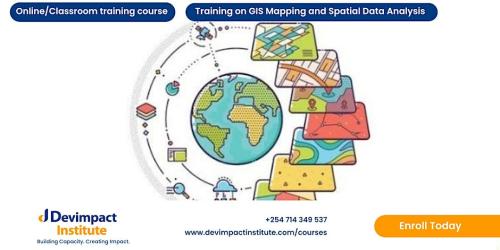Geographical information Systems have become an essential tool for planning, resource management and decision making. The ability of GIS to store, retrieve, analyze model and map spatial data has enhanced its application. Geographic information systems are used in infrastructure management, project beneficiary mapping, service facilities mapping, land use planning, market analysis, impact analysis and utilities management.
This course aims at equipping the learners with knowledge to use GIS tools to visualize real world features, explore spatial data and analyze maps to communicate information and make decisions.
Target Participants
This training is designed for participants who want to apply GIS in the work to share information and make decisions.
What you will learn
By the end of this course you will learn how to:
- Acquire, clean, and map GIS data
- Work with both vector and raster data
- Complete an entire GIS project on acquiring, processing, analyzing, and visualizing GIS data.
- Work with attributes and shapefiles in map making
- Geocode addresses to longitude and latitude coordinates
- Perform joins, clipping, normalization, and many more core GIS operations
- Work with vector and raster data
- Perform spatial analysis to better understand your data
- Create and share online maps using web GIS platforms

